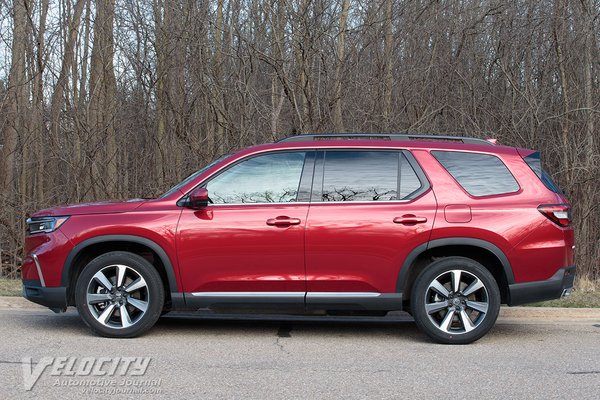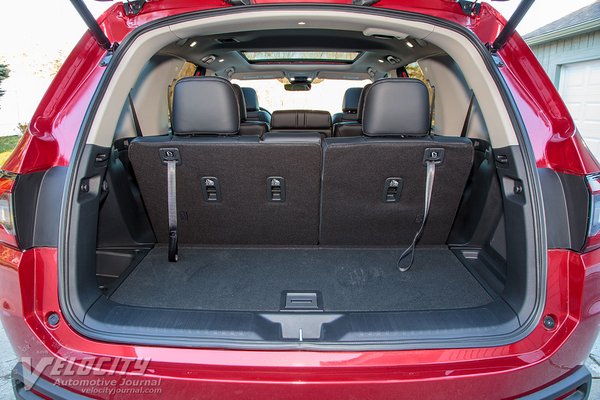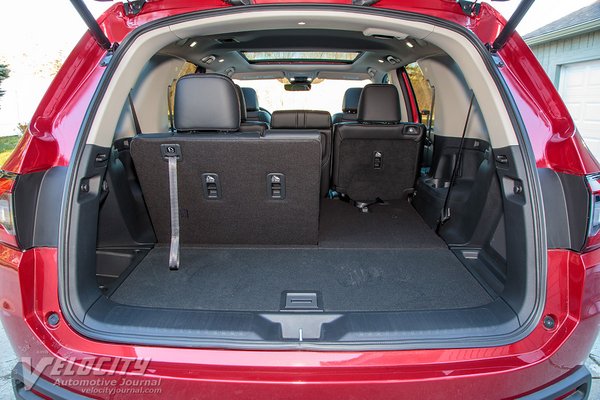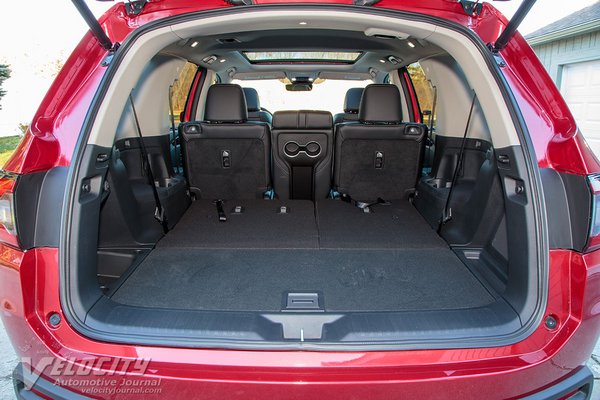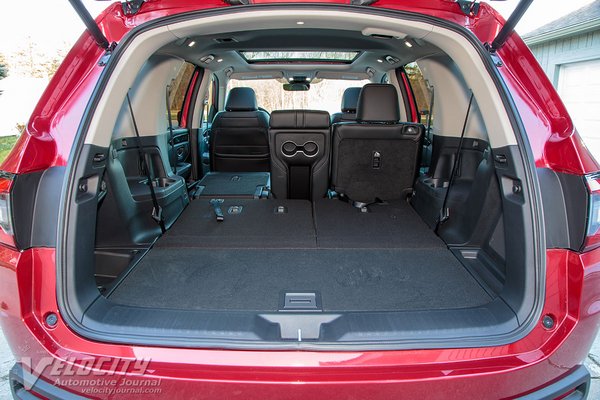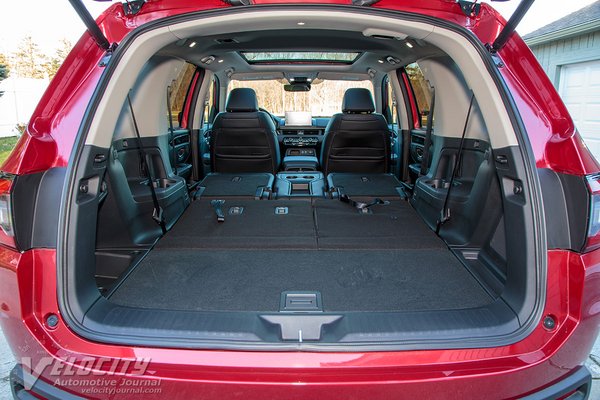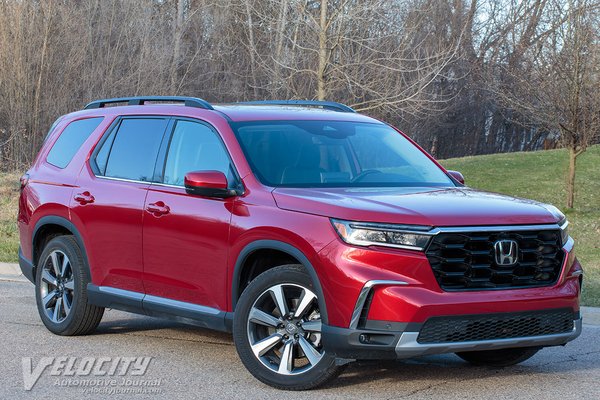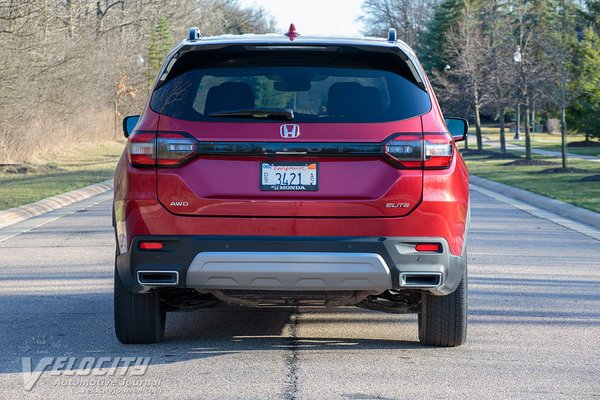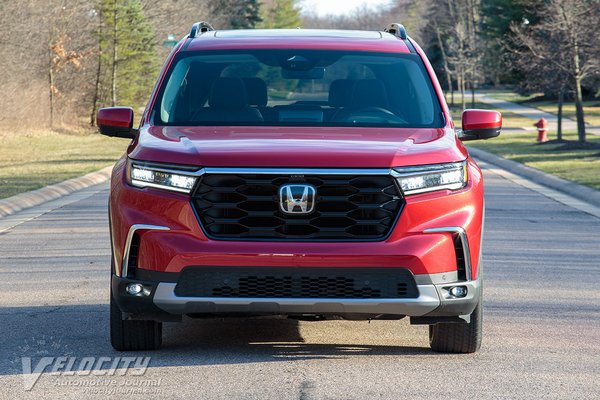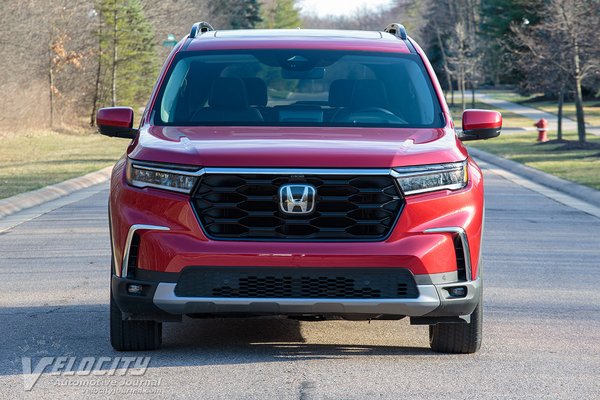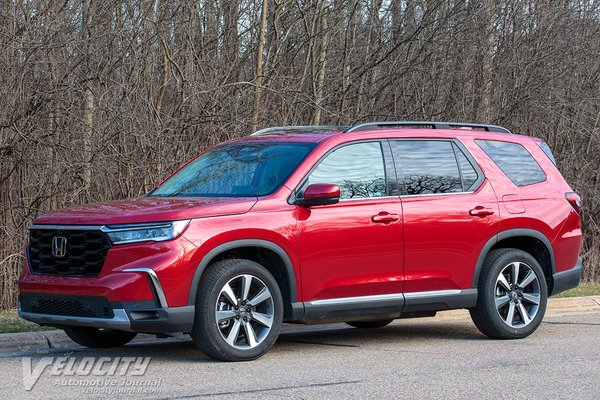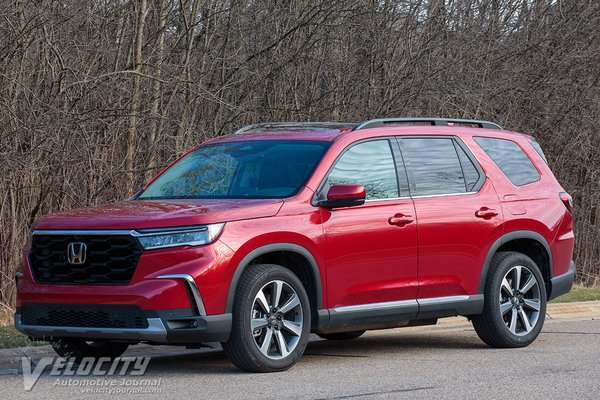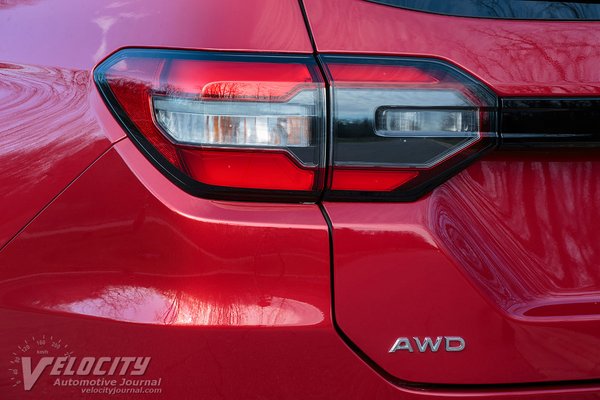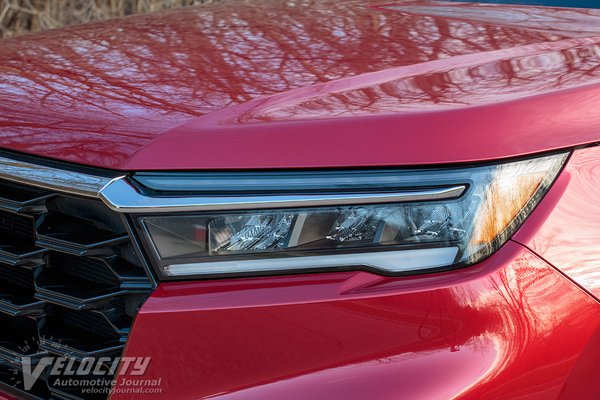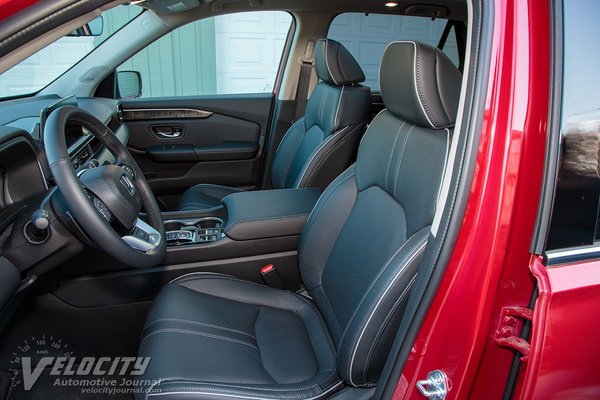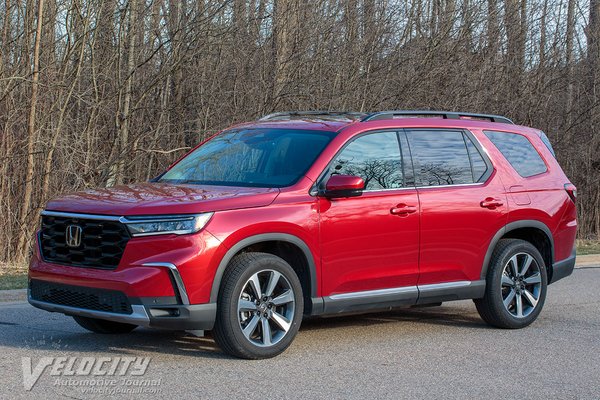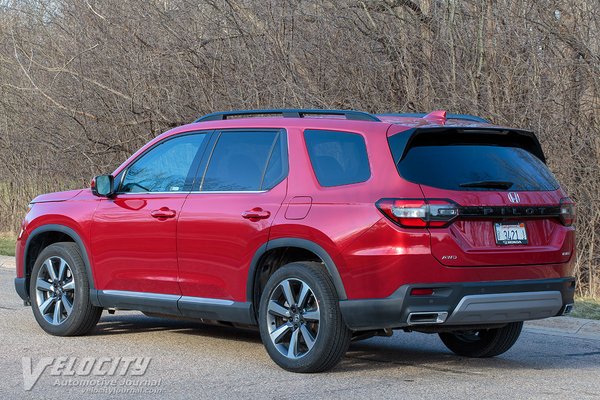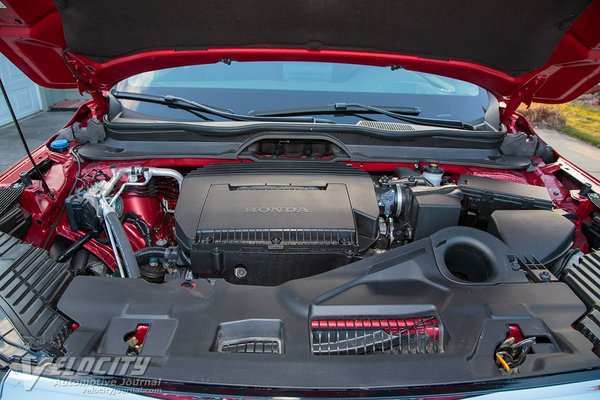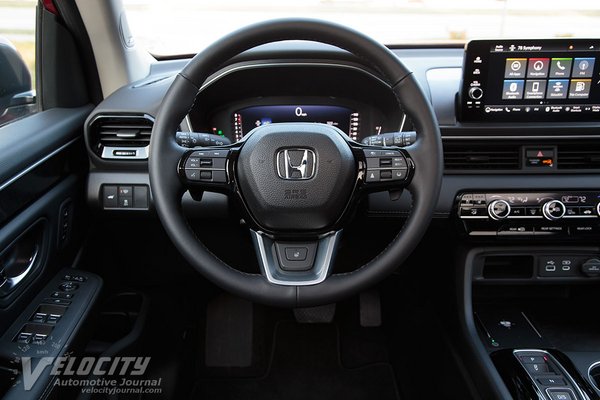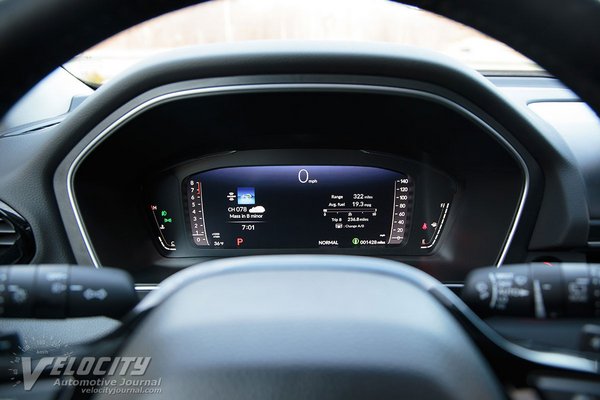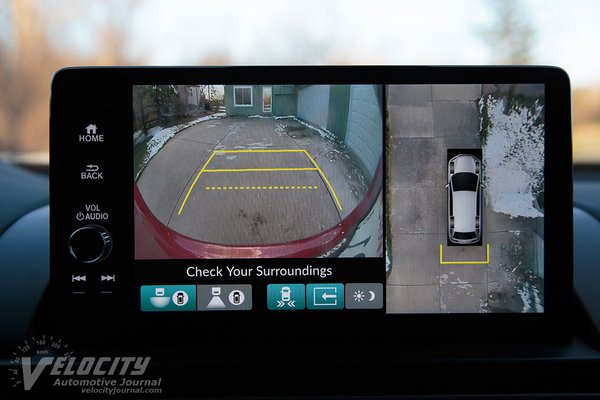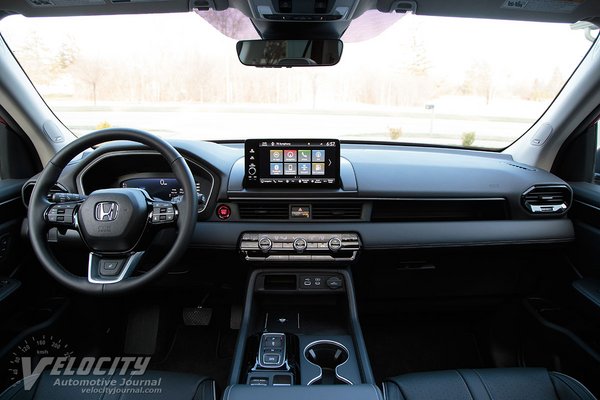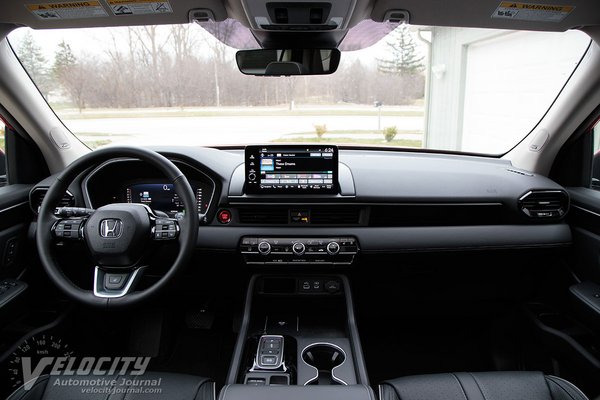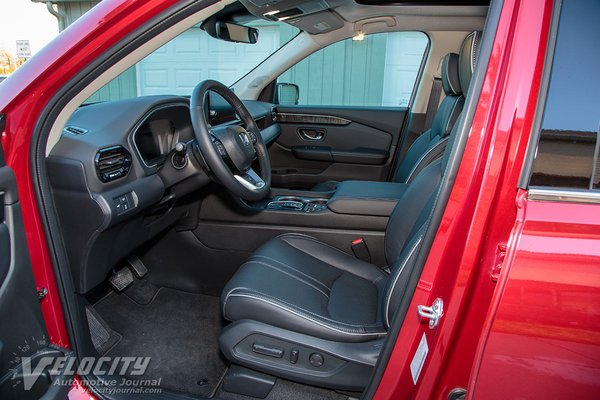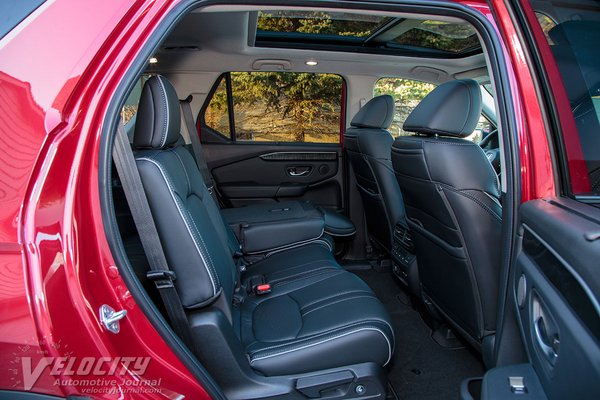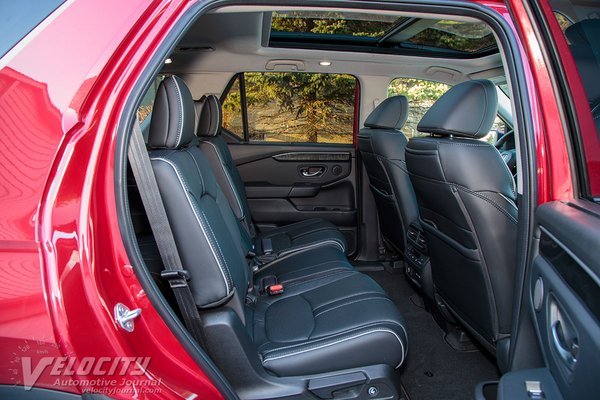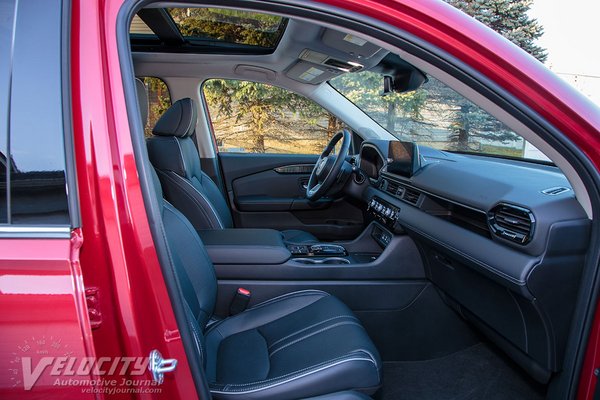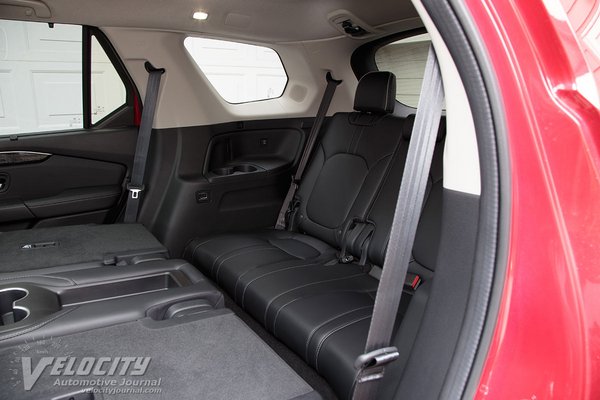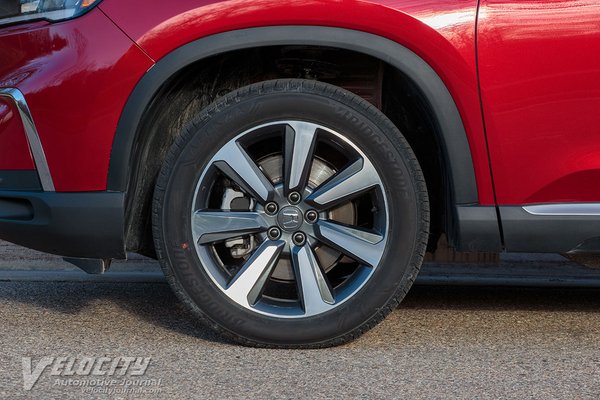2024 Honda Pilot Elite AWD
09/03/2024
Shahed Hussain
Honda released the new Pilot in 2023, the fourth generation of the SUV it introduced over 20 years ago. As the midsize SUV segment has grown in both sales and available models from other automakers, Honda has continued to update the Pilot to adapt to the evolving market. The 2024 Pilot is available in six models: LX, Sport, EX-L, TrailSport, Touring, and Elite. Pricing starts at $37,090 (LX 2WD) and ranges up to $52,480 (Elite AWD). For 2025, Honda added the Pilot Black Edition AWD ($54,280) as the top model above the Elite.
We tested a Pilot Elite AWD equipped with an extensive standard equipment list, including 20-in. alloy wheels, power tailgate, 10.2-in. digital instrument cluster, 9-in. infotainment display, head-up display, navigation, Android and Apple CarPlay, 12-speaker Bose audio system, multi-view camera system, panoramic roof, leather seats, heated and ventilated front seats, heated 2nd row seats, heated steering wheel, and heated windshield. Active safety technologies include adaptive cruise control, lane keeping assist, lane departure warning, blind spot information system, collision mitigation braking system, and forward collision warning. Radiant Red Metallic paint ($455) was the only option on the test vehicle. The total estimated MSRP, including the $1,395 destination charge added up to $54,330.
All Pilots are powered by a 3.5L V-6 coupled to a 10-speed automatic transmission with either FWD or AWD drivetrains. The front-biased i-VTM AWD system sends up to 70% of engine torque to the rear wheels via a clutch-pack driven rear axle. Compared to the previous Pilot, rear differential torque capacity is now 17% higher at 2,500 N-m (1844 lb.-ft.). For the off-road capable TrailSport, the rear axle is uprated to 3,000 N-m (2213 lb.-ft.). Honda's direct fuel-injected DOHC 3.5L V-6 produces 285 hp @ 6,100 RPM and 262 lb.-ft. @ 5,000 RPM. The 10-speed automatic has overdrive ratios in 7th-10th gears coupled to a 4.167:1 axle ratio. Fuel consumption for the Elite AWD is rated at 19/25 MPG (city/hwy.) We averaged 18-19 MPG in mixed urban and highway driving.
The Pilot's suspension consists of MacPherson struts and a stabilizer bar in front, and a multi-link design with coil springs and stabilizer bar at the rear. The motor-assisted rack-and-pinion steering system is geared for 2.98 turns lock-to-lock. Brakes are all-disc: 13.8-in. front rotors and 13.0 in. rear rotors. The Pilot Elite gets 255/50 R20 Bridgestone Alenza all-season tires mounted on 20-in. wheels. Other Pilot models are equipped with either 18-in. or 20-in. alloy wheels. Curb weight ranges from 4,030 lbs. (LX FWD) to 4,660 lbs. (Elite AWD). All-wheel drive Pilots can tow up to 5,000 lbs., but front-wheel drive Pilots are limited to 3,500 lbs.
Honda's simple and functional design philosophy is reflected in the Pilot's interior. As expected from Honda, the driver's sense of directional visibility is excellent. Controls are logically laid out for accessibility. The configurable electronic gauge cluster displays speed, engine RPM and other vehicle functions with simulated analog or digital formats. Integrated audio, phone and cruise control buttons are located on the leather-wrapped steering wheel. Dual paddles on the steering wheel allow manual gearshifts on demand. The infotainment display has an audio volume knob, but all other settings are accessible using the touchscreen interface. Climate and seat heating/ventilation controls are located below the center vents. Power and connectivity options include a 12V outlet, USB-A & USB-C ports, and a wireless charging pad. Next to the pushbutton transmission shifter are dual cupholders. Behind the center console are climate and seat heater controls for 2nd row passengers, along with dual USB-C ports and a 120V power outlet.
A midsize SUV must seat up to seven passengers, and the Pilot doesn't disappoint. The front seats provide exceptional comfort and support. Generous front and 2nd row headroom accommodates occupants up to 6'-4" tall. The 2nd row seats offer ample legroom, decent seat comfort, and even the middle position is tolerable for short trips. As expected, the cramped 3rd row seats are suitable for children only, but this is typical for SUVs in this segment.
Honda's 3.5L V-6 is smooth and refined, even at full throttle. Responsive at low and midrange speeds, the V-6 is aided by the transmission's short first gear ratio for rapid acceleration from a stop. Gearchanges can feel abrupt before the transmission warms up, especially the 1st to 2nd gear shift. Having ten speeds means that the transmission is constantly shifting in urban driving, although the programming tends to favor the higher gears. The steering wheel paddles allow manual shifts on demand, but we left the transmission mostly in automatic mode unless a quick downshift was desired.
Cruising at highway speeds, the Pilot has remarkably subdued wind, tire and engine noise. The suspension contributes to decent stability, but excessive steering power assist demands constant correction to maintain lane position. In contrast, crisp steering turn-in response makes the 2.5+ ton Pilot feel similar to the smaller, lighter CR-V. Honda's suspension tuning absorbs impacts from patched and potholed roads, but the suspension feels slightly underdamped, allowing more body motion than expected. The Pilot's all-disc brakes provide good pedal feel and progressive actuation.
Like its predecessors, the new Pilot remains a competent midsize SUV with a few minor flaws. Other SUVs have adopted turbocharged powerplants, but Honda kept its durable normally-aspirated V-6. Although the Pilot Elite is loaded with extras, value-oriented customers should consider the Touring or EX-L models, which offer most essential equipment for under $50K. In a segment crowded with SUVs from American, European and Asian brands, the Honda Pilot continues to be a leader.

